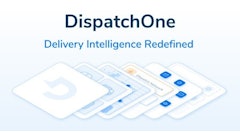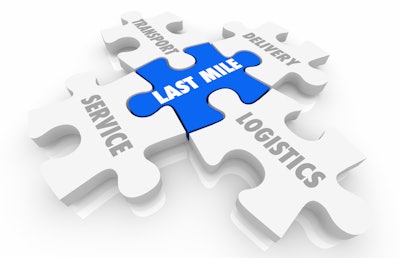
Technology innovations have the power to change entire industries. The processes that have been the status quo for decades can be improved and work better for customers who are expecting better.
When addressing the needs of the logistics and delivery/shipping industry, it may seem as if there is little room for advanced technologies such as artificial intelligence (AI), app-based communications or e-commerce-linked logistics software. However, technology has already touched the logistics space and made a world of difference for companies looking to improve customer delivery times.
Instant gratification
In this digital day and age, customers expect instant results when they place an order online — they want to know when it ships, where it is along the delivery route and when it will be delivered. Studies show that 85% of customers will no longer use a company if they have a bad delivery experience. Living on such a razor’s edge with customer satisfaction can be harrowing for companies, and this is where technology comes into play.
Customers are accustomed to ordering and delivery at the click of a button, but they also expect to be alerted when something is shipped and delivered. Logistics and delivery companies need to utilize a way to keep customers aware of the delivery process every step of the way. App-based delivery requests, for example, allow customers to set up same-day deliveries with consistent updates on where their delivery may be and when they can expect it to arrive. This instant update capability that technology gives a company plays into customer demand for that level of superior service and communication.
Increasing trust in the supply chain
Customers are aware that there were significant supply chain issues worldwide throughout 2021 and 2022, issues largely leftover from supply chain bottlenecks caused by the onset of the 2020 pandemic. But when customers can receive up-to-the-minute communication about their shipments, this helps them build trust in the supply chain again. Even through the worst of the supply chain crisis, customers still expected to receive their packages on time. This demand led companies to develop new ways of communicating and moving things along toward timely deliveries.
Machine learning, GPS and AI are just some of the ways logistics and supply companies are improving the delivery and notification experience. AI can help identify gaps in the supply chain and give customers minute-by-minute updates on deliveries if they so desire them. AI-based voice ordering can offer service booking, company communication, and even feedback from customer to delivery company immediately.
This AI tech allows customers to save time with near-immediate ordering and acceptance of the order from the company. Moreover, the improved technology within the logistics space helps keep companies remain transparent and builds back some of the trust that the industry may have lost during the supply chain crisis.
The technology helping hand
Along an order’s journey, there are several shipping updates that are standard, generated, tracked and executed. The ship date and estimated ship dates give customers an idea of when their order will actually be on its way. This is not always the same day as the order date, depending on the e-commerce or shipping company. The ship date and estimated ship dates are generated based on the individual’s company policies and, often, the time of the order, while order fulfillment cutoffs or out-of-stock issues is how an “estimated” delivery time may be generated. Estimated delivery dates are much the same, and may change based on several variables — availability, holidays, and order date, for example.
These logistical variables make real time shipping and delivery information all more valuable to customers, especially amid stock shortages or important deadlines.
In logistics, any bit of technology that helps customers get their shipments faster is a win-win for both the customer and the shipping company. By using software that tracks key performance indicators (KPIs) and other metrics, shipping companies can see how well they may be fulfilling customer orders or where they may need to improve. Analytics software is often integrated into delivery management programs where the shipping company can get a good amount of useful data all at once.
Customers are becoming used to a more AI-connected online world. There are many e-commerce sites where virtual try-on, 3D renderings or immediate voice connection to customer service reps is already possible. The days of pen and paper may be ending, leaving shipping companies under pressure to adapt to changing technologies or run the risk of being left behind by customers. In days past, if a delivery driver ran into a hiccup such as an accident or bad weather that put a hitch in the delivery plan, there were few ways to alert the waiting customer outside of a phone call. Today, shipping companies have integrated modern apps and AI technology, so a customer is always aware of where their shipments may be — whether it is same-day delivery or a longer wait.
The importance of last-mile delivery
According to a 2022 survey, 87% of logistics and delivery companies utilize real-time visibility technology, and nearly half (47%) were shortening delivery windows. A robust, last-mile connectivity was frequently cited as being very important to shipping companies looking to improve service for their customers. Most companies surveyed hoped to have processes that allowed for real-time delivery visibility and automation integrated into their approach by 2024.
As of the summer of 2022, experts widely reported that the supply chain issue was improving. The use of technology in shipping and delivery time reporting has certainly played a role in the improved situation.
Bringing technology into the shipping and logistics space can solve a litany of pain points for both customers and delivery companies. Today’s consumers are demanding in that they expect to have the ability to purchase with ease, get instant updates and delivery when they were promised delivery. With technology, companies can give customers exactly what they demand and thrill them with shortened delivery times and improved communication.

![Pros To Know 2026 [color]](https://img.sdcexec.com/mindful/acbm/workspaces/default/uploads/2025/08/prostoknow-2026-color.mduFvhpgMk.png?auto=format%2Ccompress&bg=fff&fill-color=fff&fit=fill&h=100&q=70&w=100)
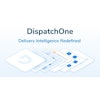


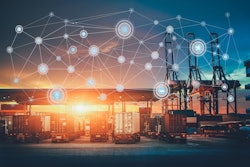


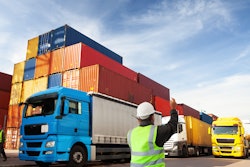

![Pros To Know 2026 [color]](https://img.sdcexec.com/mindful/acbm/workspaces/default/uploads/2025/08/prostoknow-2026-color.mduFvhpgMk.png?ar=16%3A9&auto=format%2Ccompress&bg=fff&fill-color=fff&fit=fill&h=135&q=70&w=240)
